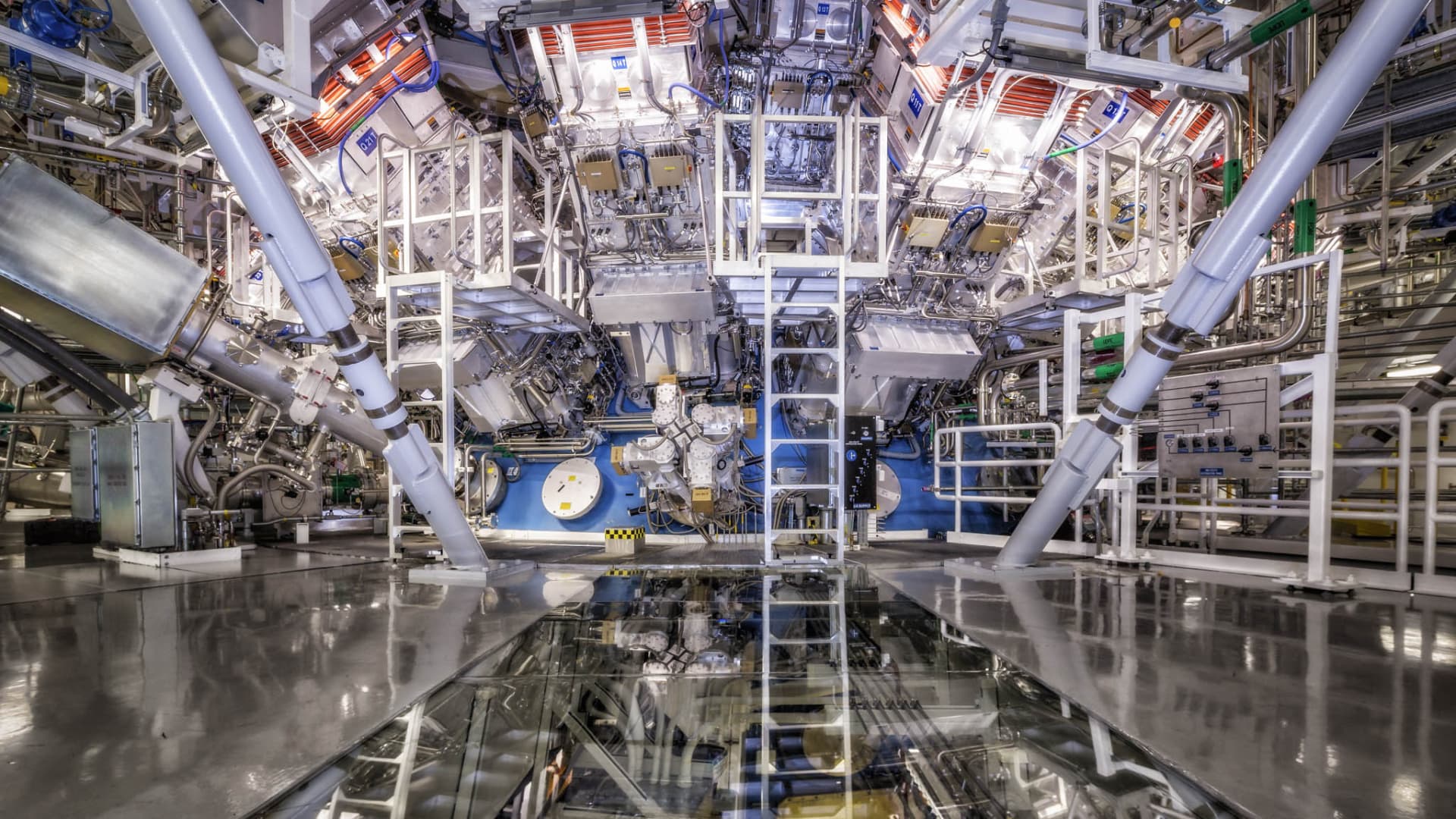On Tuesday, the head of the Department of Energy and other federal scientific leaders announced that a fusion reaction run at the Lawrence Livermore National Laboratory in California achieved net energy, meaning the reaction generated more energy than was put in to initiate the reaction. It is the first time humankind has achieved this landmark.
Fusion is the way that the sun makes power, but recreating a useful fusion reaction here on earth has eluded scientists for decades. Achieving net positive energy paves the way for fusion to move from a lab science to a usable energy source.
Fusion is particularly attractive given the increasing urgency of climate change because it produces no carbon emissions, nor does it produce the long-lasting nuclear waste associated with nuclear fission, which is the type of nuclear energy used today.
The event happened on Dec. 5, the Lawrence Livermore National Laboratory said on its Twitter account on Tuesday. “On December 5, 2022 a team from DOE’s @Livermore_Lab made history by achieving fusion ignition.” it wrote. “Also known as scientific energy breakeven, the experiment produced more energy from fusion than the laser energy used to drive it.”
“This is important. Earlier results were records, but not yet producing more energy out than was put in,” Andrew Holland, the CEO of the industry’s trade group, the Fusion Industry Association, told CNBC. “For the first time on Earth, scientists have confirmed a fusion energy experiment released more power than it takes to initiate, proving the physical basis for fusion energy. This will lead fusion to be a safe and sustainable energy source in the near future.”
One step toward the ‘holy grail’ of clean energy
Speculation swirled in the days leading up to the press conference because the interest in fusion as a potential viable energy source has increased dramatically in recent years as concerns about climate change and energy security have become more acute.
More than 90 nuclear power reactors currently operate in the United States, but those nuclear reactors are making energy with nuclear fission, which is when a neutron smashes into a larger atom, causing it to split into two smaller atoms and releasing a lot of energy. Nuclear fission reactions do not release any carbon dioxide emissions and there for are considered clean energy, according to the U.S. Department of Energy.
The United States got approximately 19 percent of its utility-scale electricity generation from those nuclear power plants in 2021, according to the U.S. Energy Information Administration, and the energy from nuclear fission reactors represents half of the clean power generated in the United States, according to the Department of Energy.
However, those reactors generate long-lasting nuclear radioactive waste when they operate, and most countries, including the United States, currently have that nuclear waste sitting on dry cask barrels on nuclear reactor sites all over the country. Efforts to build a permanent, underground geologic storage for nuclear fission waste have thus far been stymied in the United States.
Fusion happens when two atoms slam together to form a heavier atom, releasing huge amounts of energy without generating carbon dioxide emissions or long-lasting nuclear waste. But it’s proven extremely challenging to sustain a fusion reaction here on earth, and scientists have been chasing trying for decades. In particular, it requires massive amounts of energy to generate fusion on reactions, and until this experiment, nobody had demonstrated the ability to get more energy out of the reaction than it takes to power it.
“Scientists have struggled to show that fusion can release more energy out than is put in since the 1950s,” plasma physicist Arthur Turrell told CNBC.
“During those decades, every time anyone has asked for funding for developing fusion power, the response has always been ‘first, you must show that it works in principle,'” Turrell said. “That is, you must show that a fusion experiment can produce more energy than it uses. The researchers at Lawrence Livermore have done this for the first time ever.”
The success could also spur more private investment in fusion, which is already a hot space –so far, investors have poured almost $5 billion in investment into private fusion energy startups, according to the Fusion Industry Association, and more than half of that has been since since the second quarter of 2021.
“Everyone in the laser fusion (or inertial confinement fusion) community has been focused on getting to more energy out than in on a single experiment, because that is the key to showing the proof of principle and unlocking further investment and interest,” Turrell told CNBC.
Indeed, the private fusion industry is seeing this as a win.
“Now, the privately funded fusion industry will take the next steps, turning experimental results like this into a viable source of clean, safe energy,” Holland told CNBC. “In short, this will show the world that fusion is not science fiction: it will soon be a viable source of energy. Of course there are still many steps between these experimental results and fusion power plants, but this is an important milestone that brings us closer to the day when fusion will provide the world with clean, safe, and abundant energy.”
